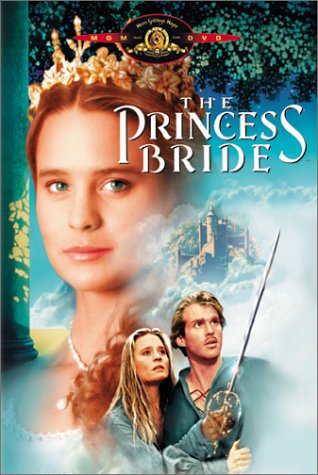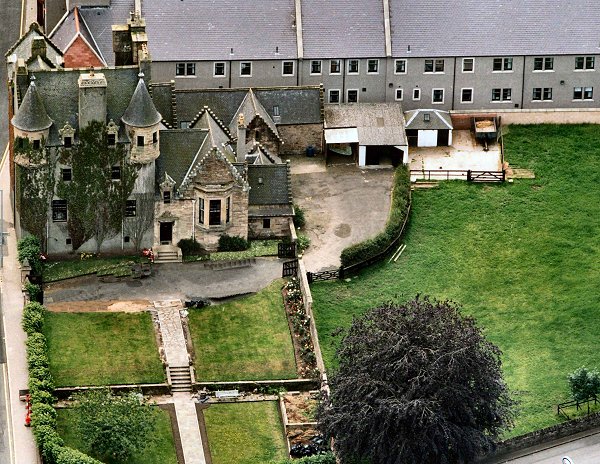Whether it's 1066 or 2009, all the best for the New Year.
Wednesday, December 31, 2008
Monday, December 29, 2008
Jokus Maximus

Wednesday, December 24, 2008
Monday, December 22, 2008
Today in the Middle Ages
MSCU Best Medieval Movies of 2008 -- In Bruges
 Ken: Coming up?
Ken: Coming up?Ray: Ken, I grew up in Dublin. I love Dublin. If I grew up on a farm, and was retarded, Bruges might impress me but I didn't, so it doesn't.
Wye Valley Brewery launches new beers for 2009

Herefordshire’s Wye Valley Brewery has designed a range of new beers for every month of 2009.
Some of the beers are brewed with local ingredients such as Herefordshire honey and Herefordshire nettles.
Others are named after local icons. These include a beer to celebrate the Hereford Mappa Mundi, the largest surviving medieval map in the world and a beer to celebrate the centenary year of the local Morgan Motor company.
Lizzie Thomas, marketing executive at Wye Valley, said: “Pubs are always looking for new beers. It’s exciting for customers to see something different behind the pump every month. They enjoy trying beers with different ABV’s and different tastes.”
She added: “Many of the Wye Valley beers this year will have a local theme. Herefordshire is a great county for hops and we wanted to celebrate that."
From: The Publican.com
Wednesday, November 12, 2008
Treasure hunter finds ancient coins

The 16 silver pennies were found by an amateur treasure- hunter, using a metal detector, and are being examined by experts at the British Museum.
V&A to begin work on £30m medieval and Renaissance galleries project

Thursday, October 23, 2008
Ruins of St Mary’s Abbey in York turned into a digital canvas

Tuesday, October 14, 2008
Pumpkin Carving Event
 It's the Great Pumpkin Charlemagne!
It's the Great Pumpkin Charlemagne!Robin Hood: Men in Tights (1993) Trailer
Movie Night! Come join us Friday October 17, 2008 in Cle A 206. We'll be watching "Robin Hood: Men in Tights" starting at 7:30, but feel free to come late! There will be munchies!
Tuesday, October 7, 2008
MSCU Event Update

Saturday, September 27, 2008
MSCU General Meeting

Sunday, September 21, 2008
Historic, Medieval Castle's Date With Auctioneer Approaches

Obscure Latin Word of the Week
Sunday, September 14, 2008
Friday, September 12, 2008
MSCU Movie Night

Tuesday, September 9, 2008
Welcome to the Medieval Studies Course Union

1. What is it? The Medieval Studies Course Union serves to connect students with an interest in the middle ages. UVic can be a big and often intimidating place, finding peers with similar interests can be difficult. Students involved in the MSCU have a wide variety of interests. We hold both academic meetings (i.e. Latin study groups, discussion nights, undergraduate conferences, etc.) and social activities (i.e. skating nights, parties, movie nights, etc.).
2. Why should I be involved? Simply put - the more you put into your experience at UVic, the more you get out of it. Students in the MSCU have made lasting friendships and have shared experiences which have enriched their time here immeasurably. As an added bonus, involvement in academic course unions can be used when applying for graduate studies. MSCU members have received scholarships based, in part, on their involvement with the course union.
3. Can I be involved? Any student with an interest in the Middle Ages can be involved with the MSCU. There is no need for you to be a Medieval Studies Major, Minor or even to be registered in a Medieval Studies course.
Sunday, September 7, 2008
Obscure Latin Word of the Week

abounding in palm trees.
How to use this word in daily life:
1. As a compliment - "My what a palmifer garden you have! I've never seen so many palms in one place."
2. As a pick-up line - "Baby, if your love is a palm tree and my heart is a garden, then I would have one palmifer garden."
3. In a noir detective novel - "And then she walked in. That dame had more trouble in her than palms in an oasis: a palmifer oasis..."
Saturday, September 6, 2008
Medieval manuscript stays in UK

Tuesday, September 2, 2008
Monday, September 1, 2008
Sunday, August 31, 2008
Knights Templar heirs in legal battle with the Pope

The heirs of the Knights Templar have launched a legal battle in Spain to force the Pope to restore the reputation of the disgraced order which was accused of heresy and dissolved seven centuries ago.
The Association of the Sovereign Order of the Temple of Christ, whose members claim to be descended from the legendary crusaders, have filed a lawsuit against Benedict XVI calling for him to recognise the seizure of assets worth 100 billion euros (£79 billion).
They claim that when the order was dissolved by his predecessor Pope Clement V in 1307, more than 9,000 properties as well as countless pastures, mills and other commercial ventures belonging to the knights were appropriated by the church.
But their motive is not to reclaim damages only to restore the "good name" of the Knights Templar.
"We are not trying to cause the economic collapse of the Roman Catholic Church, but to illustrate to the court the magnitude of the plot against our Order," said a statement issued by the self-proclaimed modern day knights.
The Templars was a powerful secretive group of warrior monks founded by French knight Hugues de Payens after the First Crusade of 1099 to protect pilgrims en route to Jerusalem.
They amassed enormous wealth and helped to finance wars waged by European monarchs, but spectacularly fell from grace after the Muslims reconquered the Holy Land in 1244 and rumours surfaced of their heretic practices.
The Knights were accused of denying Jesus, worshipping icons of the devil in secret initiation ceremonies, and practising sodomy.
Many Templars confessed to their crimes under torture and some, including the Grand Master Jacques de Molay, were burned at the stake.
The legal move by the Spanish group comes follows the unprecedented step by the Vatican towards the rehabilitation of the group when last October it released copies of parchments recording the trials of the Knights between 1307 and 1312.
The papers lay hidden for more than three centuries having been "misfiled" within papal archives until they were discovered by an academic in 2001.
The Chinon parchment revealed that, contrary to historic belief, Clement V had declared the Templars were not heretics but disbanded the order anyway to maintain peace with their accuser, King Philip IV of France.
Over the centuries, various groups have claimed to be descended from the Templars and legend abounds over hidden treasures, secret rituals, and their rumoured guardianship of the Holy Grail.
Most recently the knights have fascinated the modern generation after being featured in the film Indiana Jones and the Last Crusade and Dan Brown's novel The Da Vinci Code.
From: Telegraph.co.uk
Obscure Latin Word of the Week

Saturday, August 30, 2008
Solar-Powered Nanotech-Purified Air In Medieval Churches

Tiny gold particles found in medieval gold paint reacted with sunlight to destroy air-borne pollutants, one researcher found
"For centuries people appreciated only the beautiful works of art, and long life of the colors, but little did they realize that these works of art are also, in modern language, photocatalytic air purifier with nanostructured gold catalyst," said Zhu in a statement.
Obscure Latin Word of the Week

We're still alive!

Medieval hall that spent 400 years as a barn brought back to life

Nine medieval ships found in Oslo mud

Monks' network of medieval canals discovered in aerial photos

Saturday, August 16, 2008
Lifting the lid on Roman secrets

Saturday, August 9, 2008
Church unveils icon

Friday, August 8, 2008
A Dark Age for Medievalists
A Dark Age for Medievalists
At their annual congress in Kalamazoo, it's no longer your grandfather's Middle Ages.
by Charlotte Allen
06/02/2008, Volume 013, Issue 36
Kalamazoo
Standing before an audience of about 25 academics, all professors and graduate students specializing in the Middle Ages, in a chilly classroom on the vast campus of Western Michigan University in Kalamazoo, Jeff Persels, a lanky associate professor of French and director of European studies at the University of South Carolina, was reading aloud a scholarly paper at the 43rd International Congress on Medieval Studies. The paper's title was "The Wine in the Urine: Managing Human Waste in French Farce." The paper was about, well, the wine in the urine, or perhaps the urine in the wine. Its topic is a 15th-century farce, or lowlife comic drama, about an adulterous wife who uses a wine bottle as an impromptu chamber pot, with predictably gross results involving her husband and her lover.
Persels's paper didn't discuss the play simply as an example of Rabelaisian-style scatology, however. The perspective he used was the postmodernist discipline of "cultural studies," which means pushing works of literature (or movies or television shows or ad campaigns or whatever) through a Marxist cheesegrater as examples of the way society conditions its members to accept the views of a dominant class. In Persels's view, the wine-bottle farce marked a stage in the development of what he called the "bourgeois fecal habitus." Translated out of postmodern-ese into plain English, that means the tendency of uptight middle-class people not to want to talk in public about matters pertaining to the bathroom and to assume that those who do are kind of crude. "The excretory experience became associated with the proletariat," Persels explained. Although he seemed eager to demonstrate that he personally didn't share those uptight middle-class views, at least one of the academics in his audience remained unconvinced that a secret bourgeois habitus didn't lurk underneath his antinomian veneer. "Excretory?" she whispered to a fellow medievalist sitting next to her. "Why doesn't he just say shit?"
And you thought that the Middle Ages was all about jousting knights and damsels in distress. That's because you have never attended the medievalists' congress, the annual first-weekend-in-May ritual at Western Michigan where Persels read his wine-bottle theorizing and where it is definitely not your grandfather's Middle Ages. Persels's paper was part of a Thursday morning panel titled "Waste Studies: Excrement in the Middle Ages" and devoting a full hour and a half to human effluvia. The other two scholars that morning read papers dealing with excrement in Icelandic sagas and the theology of latrines.
Waste studies is a brand new academic discipline invented by Susan Signe Morrison, a dark-haired, extroverted 49-year-old professor of English at Texas State University's San Marcos campus and mother of two (her husband is also an English professor) who organized the session and admitted with good-humored candor in an email that her new field's disgust-provoking subject matter might be a "challenge" to scholars thinking about specializing in it. Morrison's own specialty as a medievalist used to be women on pilgrimages, but then she got the idea for her latest book, Excrement in the Late Middle Ages: Sacred Filth and Chaucer's Fecopoetics, forthcoming this September. In her email she explained that the idea for the fecal book came to her partly because she noticed that dung and privies played a role in the works of Chaucer, Dante, and other medieval authors, and partly because her "son was potty-training." And so a new scholarly industry was born.
The guru of waste studies seems to be David Inglis, a sociologist at the University of Aberdeen who coined the phrase "fecal habitus" and whose 2001 book, A Sociological History of Excretory Experience, argued that avoiding scatological topics in polite conversation is a repressive Western bourgeois hang-up. Inglis's theories fit right in with other concepts dear to the postmodernist heart of academia--"discourse," the "Other," matters "transgressive," "bodies" (in the world of postmodernism there are hardly any people, just "bodies"), etc.--so professors of literature, religious studies, and other branches of the humanities eagerly expropriated Inglis's ideas and applied them in their own endeavors. As one of the panelists, University of Oregon English professor Martha Bayless, put it with the opacity that is de rigueur in postmodernist theory, "The body is not a neutral site."The one thing in which waste-studies scholars seem not to be interested is medieval history. The idea isn't so much how people disposed of waste as what they thought about it--or if you're a cultural-studies type, what "society" thought about it. When an audience member at the session pointed out that fertilizer, whether its source was human or bovine, couldn't have been too despised by the medieval middle classes because it was a valuable commodity that generated lucrative bourgeois fortunes for the merchants who traded in the stuff, Morrison countered, "It was still considered lowly."
When the session was over, Morrison invited the attendees to a second hour and a half of waste studies. "We'll be dealing with sewage," she announced cheerfully. Alas, my own bourgeois habitus (I'm lace-curtain Irish) started to kick in, and I decided I needed a breath of fresh air, so to speak, so I opted for a different session among the 602 featured at this year's congress. Not that the postmodernist modus operandi was likely to be any different elsewhere. Down the hall from waste studies that morning was Session 5: "(Ab)normal Societies: Disability as a Socio-cultural Concept in Medieval Society." The parentheses bracketing the "Ab" are examples of a favorite postmodernist punctuation strategy, signaling to readers in the know that putatively neutral words such as "abnormal" actually convey oppressive, often sexist, hidden agendas. My own take-the-cake award for the po-mo parenthetical among the 1,500 papers presented this year went to this double-parentheses doozy, attached to a paper read in Session 251, a panel about animal symbolism in Old French literature: "Becoming (m)Others, Becoming (hu)Men: Engendering Hybrids and Monsters in Two Medieval Romances."
"Disability studies" is another hot new field in the humanities these days, and as with waste studies, it has little to do with historical or economic facts on the ground, such as, say, the manufacture of medieval crutches or how blind people eked out an existence in 13th-century Perugia. Instead, like waste studies, disability studies is all about presumed attitudes toward the disabled: how medieval folks, perhaps like folks of today, supposedly classified those who were different from them as disabled. One of the Session 5 papers was "Two Sides of the Same Coin: Defining the Mentally Ill in Plantagenet England," read by Gregory Carrier, a graduate student in history at the University of Alberta. Carrier's conclusion, after a great deal of postmodernist rambling: "The mentally ill were inherently indefinable."
The next three days featured more of the same: scholarly papers that alternated between the incomprehensible and the vaguely revolting. On Thursday afternoon I heard a paper delivered on "Menstruating Male Mystics and the Sin of Pride." Then I took myself to "Googling the Grail," at which Elizabeth Sklar, an English professor at Wayne State University in Detroit, announced that she had typed "Holy Grail" into Google and gotten nine million hits. From there it was off to "Saint Margaret: General Practitioner, not only an OB-GYN." Who knew that there were medical specialties in the Middle Ages?
A Friday morning session featured a paper titled "Alisoun's Aging Body: Gazing at the Wife of Bath in Chaucer's Canterbury Tales." Hmm, Chaucer, something solid and recognizable. The paper, however, read by Mikee Delony, an English professor at Abilene Christian University, turned out not to be about Chaucer at all but about a BBC television production a few years ago that turned the Wife of Bath into a modern-day plastic-surgery junkie. There turned out to be more papers at the congress about the forgettable 2001 movie A Knight's Tale (three) than about Chaucer's Knight's Tale (one). In one of those papers, delivered with much help from PowerPoint and titled "Knights, Dykes, Damsels and Fags: Gender Roles and Normative Pressures in Neomedieval Films," Wayne Elliott , a graduate student at Kent State University, argued that the film Knight's Tale had a homoerotic subtext because it starred Heath Ledger. Poor Ledger. He made the double career mistake of (a) playing a gay cowboy in Brokeback Mountain and (b) dying before he had a chance to live it down.
There were numerous other papers with either "normative" ("heteronormativity" is bad because it implies that heterosexuals are more normal than homosexuals) or "masculinity" (like femininity, a social construct, not an inherent characteristic) in their titles, and sometimes both, as in this bilingual tonguetwister: "Nach der Mannesnamen Site? Amazons and Their Challenge to Normative Masculinity in Medieval German Literature." Other buzzwords among the medievalists at Kalamazoo were "hybridity" (borrowed from "postcolonial" studies), "heterosyncrasies" (I never could figure out what that meant), and that hardy perennial "patriarchy."
Speaking of patriarchy, six female professors gathered on the first full day of the congress for a roundtable discussion sponsored by the Society for Medieval Feminist Scholarship. The topic was a book titled History Matters by Judith Bennett, a professor of medieval history at USC, whose theme, judging from the discussion, is that feminists ought to redouble their efforts to fight patriarchy. The discussion, however, soon turned into a lament by some of the feminist professors that they had trouble persuading students of either sex to sign up for their courses. "One young woman told me that she wasn't taking my course on gender and experience because, she said, 'I don't want to take another feminist class,' " explained Wendy Marie Hoofnagle, a professor of medieval studies at the University of Connecticut. This complaint was echoed the next day by Audrey DeLong, a literature professor at Long Island's Suffolk County Community College, at a session devoted to strategies for sneaking postmodernist theory into the heads of reluctant undergraduates who might rather be elsewhere. "In my students' demographic, they hear the word 'feminist' and they shut down," said DeLong.
The International Congress on Medieval Studies bills itself as the largest gathering of medieval specialists in the country--and it probably is. Because it is timed to coincide with the end of the school year on most college campuses, including Western Michigan's, some 3,000 professors, graduate students, and amateur and professional experts on any subject that can be loosely defined as medieval ("loosely" can and does include J.R.R. Tolkien, Harry Potter, Xena the warrior princess, and even The Da Vinci Code) fly or drive to Kalamazoo, often taking along sheaves of their students' papers to grade during spare moments.
There they spend up to four days delivering or listening to some of the 1,500 scholarly papers presented at the congress, roughly one paper for every two attendees, but mostly (because the 600-odd sessions featuring those papers are crammed into only 12 hour-and-a-half time slots, which means no single person can hear more than a handful of them) socializing, in relationships that range from the strictly professional to--or at least I am told--the uninhibitedly erotic. The high point of the congress is the Saturday night dance, a not-to-be-missed spectacle of more than a thousand medievalists cramming themselves into a ballroom in the Western Michigan student center, fueling themselves with rail booze, and dancing the way you might expect scholars of the Middle Ages to dance. It doesn't help that most of the Kalamazoo medievalists look and dress the way you might expect scholars of the Middle Ages to look and dress. Some, of course, present themselves as the professionals they are--suits and ties on men, pulled-together ensembles on women--but they are likely as not to belong to a contingent of visiting Romanians. The best way to describe the attire of many attendees, which runs heavily to ethnic textiles, unusual body ornaments, sweaters of indeterminate age, shoes resembling those favored by medieval peasants, and unintentionally amusing hats, is the reply I overheard one medievalist give to a query by a nonmedievalist sharing our airport limo as to whether congress attendees wore costumes: "A lot of them wear costumes, but they don't know it."
The overblown size of the event--who knew that there were even 3,000 medievalists in the entire world?--illustrates the law of diminishing returns. When 1,500 scholarly papers appear on a single agenda, it is reasonable to expect that a large number of them will not represent lasting contributions to the store of human knowledge. Persels's wine-bottle paper, although dealing with subject-matter you wouldn't want brought up at the dinner table, was actually one of the better, in terms of overall learning, of the two dozen or so papers I heard (and his French accent was excellent). But besides the law of diminishing returns, the congress also illustrates all too faithfully various aspects of the law of supply and demand, one of which is that the total number of medievalists probably exceeds the total number of college undergraduates these days who have the slightest interest in learning the smallest thing about the Middle Ages. That dismal fact lies at the core of all other observations to be made about the congress.
The International Congress on Medieval Studies is the affordable medieval conference, centrally located in the Midwest (despite its "international" moniker, most attendees hail from the United States and Canada), and because of its low cost appealing to even the most underpaid and underemployed of academics in the field. The congress seems to have been designed that way from the beginning. Western Michigan, occupying 1,200 hilly acres on the far western outskirts of Kalamazoo, is one of those state normal schools that during the mid-1950s decided to switch identities overnight from poky teachers' college to populous state research university via a massive building campaign entailing awe-inspiring quantities of cinderblock. Today the student population totals 26,000, and its enormous campus is dotted with midcentury structures of an architectural style that can be described as "non-descript but sturdy."
Engineering, science, and business are Western Michigan's strong suits, along with Division 1A football--not exactly promising soil for nurturing study of the Middle Ages. Still, the campus houses a Medieval Institute that sponsored the first congress in 1962 and continues to do so to this day, as well as an Institute of Cistercian Studies (complete with an impressive rare-books library) that started sponsoring theological sessions at the congress during the early 1970s. The congress, with its lingering overtones of 1960s hippie culture, was designed as a gathering of the tribes in all things medieval: history, literature, theology, philosophy, drama, art, and music. The idea was that Western Michigan's student dormitories, vacated for the summer, would house the participants, and the sessions would take place in the now-vacant classrooms. For its first two decades, the congress remained relatively small and collegial, featuring perhaps a hundred sessions. Then it began to balloon to its present size of more than 600.
And why not? After all, the law of supply and demand says that low prices mean more customers. The Western Michigan dorms still cost only $35 a night ($28 if you double up with a roommate), there's a free airport shuttle, you can eat cheap at the cafeteria (or for nothing if you crash the receptions that serve hors d'oeuvres), and anybody with a credential and entrepreneurial energy can organize a session or read a paper. If you don't mind sleeping on a thin mattress in a cinderblock-walled, linoleum-floored, underlit, and virtually unfurnished 1960s-era dorm room that looks like Cellblock No. 9 and features an erratic heating system that alternately broils and chills, sharing a bathroom with up to three strangers (fecopoetics alert: cinderblock transmits sound with startling efficiency), and eating Midwestern student-cafeteria versions of your favorite dishes (such as the "Mediterranean" salad consisting of skewers of coconut shrimp atop a plateau of limp lettuce) while sharing your board with still more strangers whose immersion in medieval arcana is likely to have impaired their table manners, the International Congress on Medieval Studies is the academic conference for you. Oh, and you must also enjoy trudging up and down hills to and from sessions widely scattered across the campus.
Should you wish to trek into downtown Kalamazoo for a change of scene or cuisine--forget it, unless you've got a lot of time on your hands for a lot of walking along traffic-clogged highways. Besides, there's not much to see or do in this onetime Midwestern industrial hub on the railroad line between Detroit and Chicago now noticeably deindustrialized and depopulated. Kalamazoo doesn't quite look like the famously rundown Flint, Michigan, of Michael Moore movies, but gentrification still has a way to go. A warning to juicers: The vast Western Michigan campus, where you will be more or less confined as if on the county honor farm if you are too poor to rent wheels, is entirely dry, unless you bring your own bottle (which many do) or frequent the cash bars briefly open at the receptions and the dance.
Not surprisingly, then, the congress is generally shunned by the superstars of medieval academia: the senior professors and well-known scholars who occupy endowed chairs or draw generous compensation packages from Ivy League and top state universities. Those fortunate scholars, whose trips to academic get-togethers are typically fueled by hefty travel allowances from their affluent home universities, tend to prefer the classy get-togethers of the Medieval Academy of America, founded in 1925 by the famous Harvard historian Charles Homer Haskins and usually holding its annual meetings each March at big-city hotels or on the campuses of prestigious colleges with plenty of nearby cultural and entertainment amenities. The Medieval Academy does sponsor sessions at Kalamazoo, and some big medieval names do show up--this year's congress featured a stellar plenary address on medieval bestiaries by Christopher de Hamel, manuscript librarian at Cambridge University's Corpus Christi College, as well as appearances by the veteran Chaucerian scholar Derek Pearsall of the University of York, well-known medieval historians Brenda Bolton and Barbara Hanawalt, and Seth Lerer, dean of postmodernist medievalism at Stanford.
But most of the worthies who come to Kalamazoo do so as "presiders" whose sole job is to lend the gravitas of their names to sessions and introduce the worker-bee scholars who will actually read papers, thus being spared the drudgery of either writing a paper or doing the organizing. (You won't find them sleeping in the dorms, either; most book accommodations well off campus, preferably at the Radisson Plaza, Kalamazoo's best hotel.) The pecking-order realities of academic life, even among otherworldly medievalists, leave a vast army of poorly paid, overworked lower-echelon professors at not-so-big-name universities and, of course, legions of strapped graduate students for whom a trip to Western Michigan and the dorms of "the Zoo," as they call it, may well be the high point of the academic year.
Many state schools and smaller colleges on tight budgets pay for at most one or two trips to academic conferences per professor per year, and often at the rate of just $500 or even $300 per conference--hardly enough to cover air fare--and usually only if the recipient delivers a paper. You scarcely need to put two and two together to figure out why this year's congress featured 1,500 papers and why so many of them, delivered by graduate students afraid to venture outside the postmodernist box in which their theory-laden seminars have confined them, or professors who seemed to have hastily thrown their notes together in order to qualify for a free plane trip, were, to put it kindly, not so hot.
There are oases of excellence in the po-mo desert at Kalamazoo. Many sessions, especially those dealing with medieval theology and philosophy, which are typically sponsored by specialty organizations such as the Cistercian Institute or the Aquinas Society, offered papers that were rigorously researched and argued. The congress also features first-rate performances of medieval drama and music as well as a giant book fair. Still, many scholars, especially historians, feeling choked by the miasma of mediocrity, have stopped coming to Kalamazoo. Thus the overwhelming majority of the sessions nowadays are in the field of literature, especially English literature, which is notorious for its vulnerability to theoretical hoo-hah and for the large numbers of bottom-feeding assistant professors and at-sea graduate students needed to staff the required freshman composition classes that are run out of many universities' English departments.
Another reality of academic life draws bodies to Kalamazoo: professional loneliness in remote settings where hardly anyone else on campus cares about the Middle Ages. Over lunch in the cafeteria, Ellen Friedrich, an associate professor of Romance languages at Valdosta State University in Georgia, explained the facts of life for her: teaching four different courses per semester (in the Ivy League the norm is two) mostly way outside of her specialty, which is medieval French romances (not high on the list of academic interests for Valdosta undergrads), leaving almost no time for scholarly research. For her as for many in her position, the congress and other academic conferences offer their only chance to visit with professional confreres. "We're Kalamazoo junkies," Friedrich explained.
The difficulties of being a medievalist in an era in which few universities require their undergraduates to learn anything about the Middle Ages (mandatory courses in the history of Western civilization being a thing of the past), and in which undergrads increasingly shun the humanities because they can't take all the theory, accounts for another odd aspect of the Kalamazoo congress: the ever-growing number of sessions that don't deal at all with matters medieval but rather with modern books, movies, television shows, magazine ads, and even video games featuring either medieval or pseudo-medieval themes. Tolkien, Harry Potter, and "Googling the Holy Grail" were only the tip of the iceberg. There were countless papers purporting to highlight medieval themes in D.C. comics, Bram Stoker's Dracula, and the 1990s Xena: Warrior Princess television series. One session was entirely devoted to medieval blogs, including a paper comparing the works of Geoffrey Chaucer to the blog "Geoffrey Chaucer Hath a Blog." The blowout, or perhaps the reductio ad absurdum, of these scholarly endeavors was Session 531 on Sunday morning, "Medieval Masculinities on Film." That session featured four separate papers: yet another examination of A Knight's Tale, an effort to prove that the 1961 movie El Cid, starring Charlton Heston, was a piece of Franco-engineered propaganda, a cinematic look at the story of Tristan and Isolde, and "Medieval Masculinity as Modern Monstrosity," a postmodernist analysis of Hannibal Lecter.
Such presentations proved to be among the better attended, and at least some of the individual papers (although maybe not those read in Session 531) displayed more literary depth and passion than many of the papers dealing with "real" medieval literature run through the postmodernist meat-grinder. "Teaching Tolkien" drew more than 70 attendees. One of the Da Vinci Code panels featured a paper that got my personal vote for best in the entire weekend: "Queering the Code: Jesus and Mary or Jesus and John?" a deadpan spoof by Madeline Caviness, an art history professor at Tufts University, arguing that Dan Brown's potboiler about Jesus' supposed marriage to Mary Magdalene was actually part of a Vatican cover-up of the savior's gay relationship with one of his apostles. Caviness managed to drag out and send up every cliché in the postmodernist dictionary that had been invoked with deadly earnestness elsewhere at the congress: "essentializing discourse," "destabilize the heterosexual imperative," "the heteronormativity of Jesus."
It's pretty clear that in an era in which undergraduates at many colleges can as readily fulfill their humanities core requirements by selecting a course on The Lord of the Rings from the academic smorgasbord as, say, selecting a course on The Canterbury Tales, medievalists make themselves useful on campus (and fill their classrooms and make their department heads happy) by teaching the former. But there may be something else at work, too, in the obvious enthusiasm with which highly trained experts in arcane specialties devoured sessions devoted to Tolkien and J.K. Rowling: There they could drop their postmodernist cynicism about "society" and simply drink in the elaborate cosmology, spiritual depth, literary beauty, and shared meaning that used to be what scholars looked for in real medieval literature, before the cultural-studies people got hold of it. Larry Caldwell, an English professor at the University of Evansville whose specialty is Anglo-Saxon literature but who read a thoughtful paper titled "Stern Vision, Earnest Evasion: Neomedieval Catholicism, Peter Jackson, and the Limitations of Popular Cinema," wrote to me in an email about Jackson's blockbuster movies of the Tolkien trilogy: "[W]e are looking at . . . a sort of universally shared text that non-specialists embrace with as much enjoyment as do members of the emerging specialist community of formal Tolkien scholars." Quite a difference from the "bourgeois habitus."
But on to the dance! In medieval times every story had a moral. The moral of the Saturday night dance at the 43rd International Medieval Congress in Kalamazoo is that no scholar of the Middle Ages is too old, too graceless, too bulging of derrière, too gray of beard or ponytail, or too tattooed to get up on that parquet floor and gyrate spasmodically to vintage Bon Jovi amplified to jet-engine decibels. I'm told that the dances of today are no match in noise and lasciviousness for those of the mid-1990s, when flocks of leather-clad gays took to the floor to celebrate their academic coming-out in a congress session on "Queer Iberia." Still, I spent two hours there nursing a beer and mesmerized by the bobbing fauxhawks, the shaking bare flesh (and plenty of it), the hip-hopper in the Blondie T-shirt, the fellow in the full kilt and sporran who had been wandering through the congress as though in search of the set for Brigadoon, the nose-rings, the Birkenstocks, the Pashtun caps, the bare feet of the learned professors of the Middle Ages and their grad-student acolytes. Maybe it's not a pretty sight, but as the swaying sardine-packed academics on the dance floor sang along in unison: "We've got to hold on to what we've got."
Charlotte Allen, a contributing editor to the Manhattan Institute's Minding the Campus website, is writing her doctoral dissertation in medieval and Byzantine studies.
Thursday, July 24, 2008
£10,000 lead theft at church
Saturday, July 19, 2008
Archaeologists find 600-year-old chess piece in northwest Russia

The city will celebrate its 1150th anniversary in 2009.
Medieval churches face threat of closure
Among the buildings under threat are: St Cadfarch, in Penegoes, home to a monument to the landscape artist Richard Wilson, one of the founders of the Royal Academy; St Tydecho, in Mallwyd, which dates back to the 14th century and houses a memorial to the renaissance scholar Dr John Davies, who was responsible for a 1620 revised translation of the Bible into Welsh; and St Ust & Dyfrig in Llanwrin, which has some of the best medieval stained glass from the late 15th century.
From: Telegraph.co.uk
Saturday, July 12, 2008
A castle in Ayr - with a house thrown in

Iconic she-wolf nurtures a Roman archaeological mystery

Monday, July 7, 2008
Sunday, July 6, 2008
Today in the Middle Ages

Wednesday, July 2, 2008
Thieves prise relics out of cathedral altar in Germany












.jpg)


